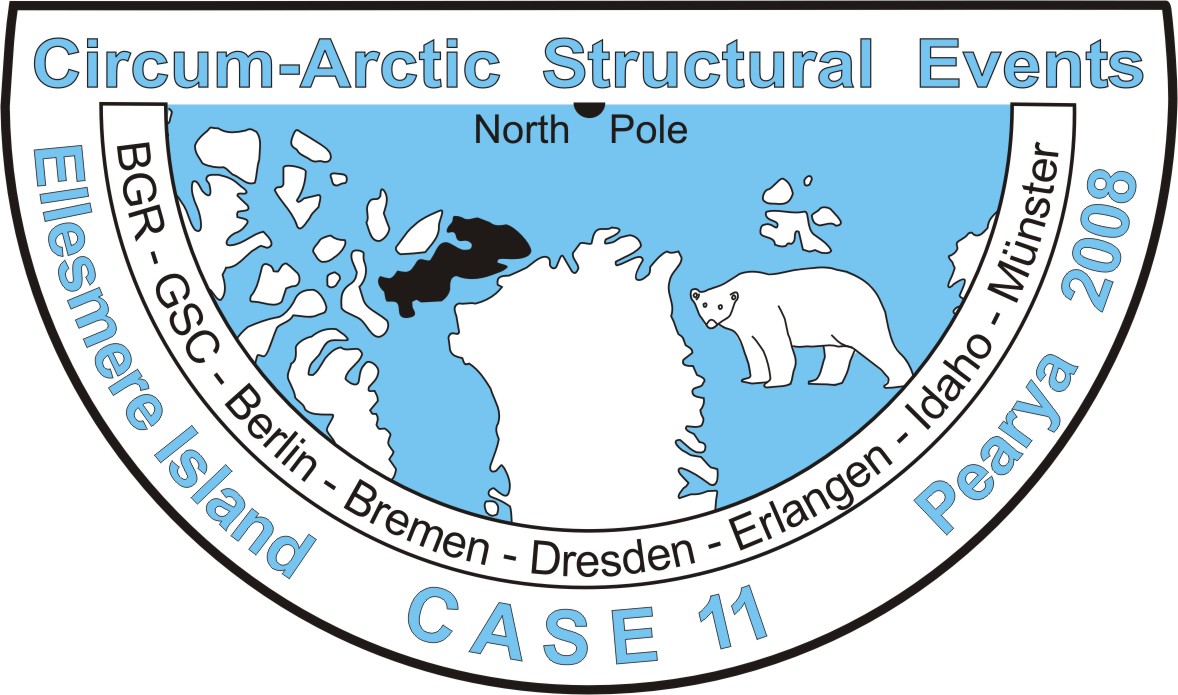Climatic evolution at the northern rim of Pangea (Canada) during Permian/Carboniferous
times
Christian Scheibner (in cooperation with Holger Forke and the BGR)
DFG Project SCHE 685/6-1
The Sverdrup Basin is an approximately 1000 km wide and 400 km broad depocenter for Carboniferous to Tertiary sediments (fig. 1). The earliest deposits of the Sverdrup Basin are non-marine shale, siltstone and limestone of Visean age (Beauchamp, 1987). During late Carboniferous and early Permian times, evaporites and shales were deposited within the basin (Otto Fjord and Hare Fjord Formations), while a carbonate platform with minor siliciclastic input dominated the margins (Nansen Formation). Close to the shoreline siliciclastic sediments and subordinate carbonate sediments of the Canyon Fjord and Belcher Channel Formations were deposited.
A general depositional model of the Lower Permian strata of the warm-water carbonate Nansen Formation separated altogether 19 facies types, which were grouped into four depositional areas (inner shelf lagoon and barrier/shoals, mid shelf non-reefal and reefal deposits). These 19 facies types are very similar/identical to the facies types established in Svalbard by Hüneke et al. (2001) and Blomeier et al. (in press.) for the time-equivalent warm-water carbonate strata of the Wordiekammen Formation, suggesting an overall similar depositional environment for the Upper Carboniferous to Lower Permian carbonate successions in the Sverdrup Basin and in Svalbard. These sediments were deposited during Upper Carboniferous to Lower Permian varying sea level fluctuations (Beauchamp, 1987).
Goals (Ziele)
- Reconstruction of the cyclic depositional evolution of the individual
sections based on facies analysis. Each cycle is ideally composed of shallowing
upward facies types.
- Characterization of cyclicity within different shallow-marine depositional
settings.
- Evolution and variation of faunal associations (foraminifers, algae,
brachiopods, bryozoans, conodonts, corals) within different types of cycles.
The paleoecology of fusulinid foraminifers will play an important research
question.
- Compilation of two independent biostratigraphic schemes (larger foraminifera
(fusulinids), conodonts) for the individual sections and the study area.
- Intrabasinal correlation of different sections based on facies analyses,
cyclostratigraphy and biostratigraphy.
- Determination of the onset of the marine carbonate platform deposits
in the Sverdrup Basin (in connection with the project of B. Bomfleur).
- Reconstruction of the carbonate platform and paleogeography based on
facies analysis of individual sections and the correlation of a number
of vertical sections, which will be logged across the entire investigation
area. In a later step already published sections will be incorporated.
- Estimation of the steering factors especially the effect of sea-level
changes on the depositional environments and the Carboniferous cyclicity
in the Sverdrup
